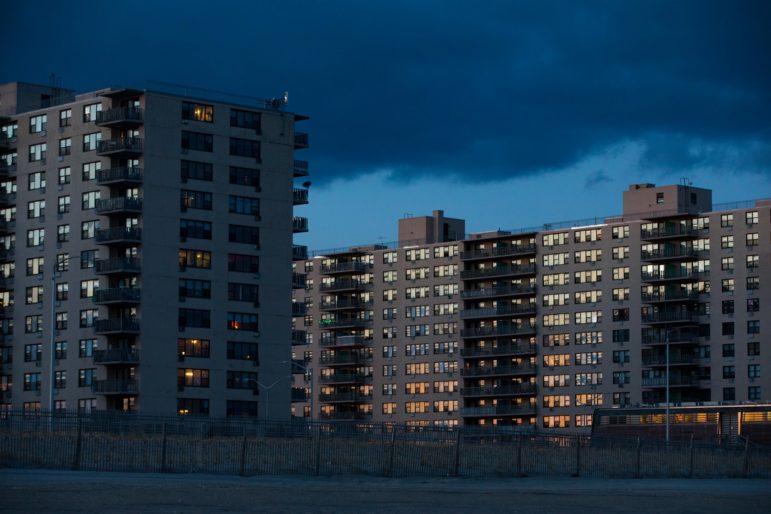“The Building Code Council can and should take action now. They have the legal tools to change the code to include electrification in new constructions as a mechanism to achieve climate goals.”

Benjamin Kanter/Mayoral Photo Office
Apartment buildings in Queens at dusk.In 2019, New York State adopted the country’s most comprehensive and ambitious climate targets. With commendable goals surrounding zero-emission electricity, reductions in greenhouse gas emissions, the creation of clean energy jobs and much more, New York is poised to become the bellwether for progressive climate policy.
As exciting as it was, passing the Climate Leadership and Community Protection Act (CLCPA) was just the start. New York’s real opportunity to show leadership will come from the implementation of the law’s agenda. This will require thoughtful guidance focused on reducing unnecessary barriers to electrification.
To oversee the herculean task of implementing the CLCPA, the Governor appointed the 22-member New York State Climate Action Council (CAC). Recently, the Council approved a Scoping Plan that will serve as the roadmap for the state to achieve its stated climate and energy goals.
One of the keys to unleash the opportunities included in this plan can be found in an unexpected place: New York’s building codes. As a result, the Building Code Council holds the key to unlocking the potential for a cleaner, electric future for New York.
In recent weeks, environmental advocates and legislators have called upon Gov. Kathy Hochul to include a ban on fossil fuel combustion and institute electrification mandates for all new construction projects in her upcoming Fiscal Year 2024 executive budget. As Assemblywoman Emily Gallagher of Brooklyn pointed out, “with every building emitting more carbon emissions into the air, New Yorkers only become poorer, sicker, and closer to climate catastrophe.”
She’s right. According to the World Health Organization, exposure to air pollution can lead to increased risk of respiratory infections, heart disease and lung cancer. Those with preexisting conditions, like asthma, are especially affected by air pollution. So not only is the CAC trying to quell the climate crisis on our hands, but they’re also aiming to improve the health of New Yorkers.
Unfortunately, the Building Code Council recently decided that it will not update the building code for electrification of new construction unless a specific law is enacted that requires them to do so. Members of the board even went so far to say that they do not have the statutory authority to incorporate full electrification into the state building code.
Simply put: this interpretation from the board is plain wrong. The state legislature does not need to pass a law to enable the Building Code Council to update the code. In fact, there is already a statute in place that requires the Building Code Council to follow the guidance of the CAC. It specifically states that “the code shall be designed to help achieve the state’s clean energy and climate agenda… set forth within chapter one hundred six of the laws of two thousand nineteen,” otherwise known as the New York State Climate Leadership and Community Protection Act. The Scoping Plan set by the CAC also called on the Building Code Council to update the code so that new construction is zero-emissions, i.e., go electric.
The Building Code Council can and should take action now. They have the legal tools to change the code to include electrification in new constructions as a mechanism to achieve climate goals.
New Yorkers want and deserve to see these goals met, and better yet, exceeded. They deserve to see improvements to their health. Children with asthma shouldn’t have to be worried about having an asthma attack just because they’re playing outside at recess.
The Building Code Council has an opportunity to break down unnecessary barriers that prevent these targets from being realized. Let’s make sure that New York follows through on its climate and energy targets, for the sake of our planet and future generations.
Michael Hernandez is the New York policy director for Rewiring America, where he leads efforts to influence state policy initiatives to accelerate the transition to demand-side electrification as the most tangible and common-sense strategy for addressing the climate crisis.








